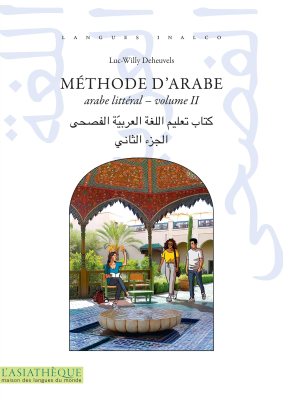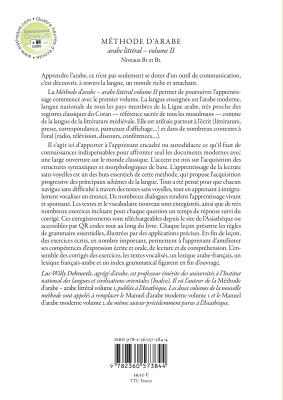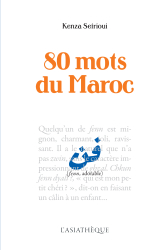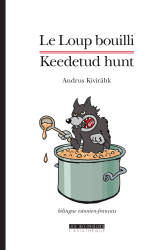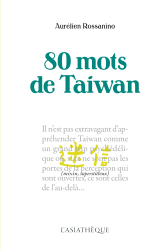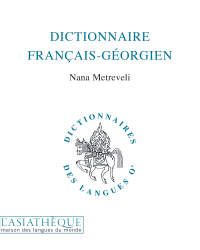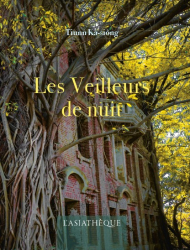Details
Format: Paperback
ISBN: 9782360573844
Collection: Langues INALCO
17 x 24 cm
Weight: 420 gr
Pages: 320
First publication: 23/08/2023
Last printing: 07/2025
CLIL: 3034
Méthode d’arabe 2 (Livre + audio)
(Arabic Language Method (Book + audio))
arabe littéral — volume 2
(literal Arabic - volume 2)
Levels B1 and B2 of the Common European Framework of Reference for Languages (CEFR)
Learning Arabic is not just about acquiring a means of communication; it is also about discovering, through the language, a rich and fascinating world.
The Méthode d'arabe - arabe littéral volume II (Arabic Language Method literal Arabic - volume 2) continues the learning process begun with the first volume. The language taught is modern Arabic, the national language of all the member countries of the Arab League, very close to the classical registers of the Koran - the sacred reference for all Muslims - and to the language of medieval literature. It is used everywhere in written form (literature, press, correspondence, billboards, etc.) and in many spoken contexts (radio, television, speeches, conferences, etc.).
The aim of this course is to provide the learner, whether supervised or self-taught, with the knowledge they need to deal with modern documents on their own, with a broad view of the classical world. The emphasis is on the acquisition of basic syntactic and morphological structures. Learning to read without vowels is one of the essential aims of this method, which proposes the gradual acquisition of the main patterns of the language. Everything has been thought out so that everyone can navigate through vowel-free texts without difficulty, while learning to vocalise an utterance in its entirety. Numerous dialogues make learning lively and spontaneous. The texts and new vocabulary are recorded, along with a large number of exercises that include an answer time for each question, followed by the answers. These recordings can be downloaded from L'Asiathèque's website or accessed by QR codes throughout the book. Each lesson presents the essential grammar rules, illustrated by specific applications. At the end of each lesson, a large number of written exercises enable learners to improve their written and oral expression, reading and comprehension skills. All the answers to the exercises, vocalised texts, an Arabic-French lexicon, a French-Arabic lexicon and a grammatical index are included at the end of the book.
MEDIA LIBRARY
Audio recording
CONTRIBUTORS' BIOGRAPHIES
Luc-Willy Deheuvels

Luc-Willy Deheuvels has an agrégation in Arabic and is Professor Emeritus at the Institut national des langues et civilisations orientales (Inalco). He is the author of Méthode d'arabe - arabe littéral volume 1, published by L'Asiathèque. The two volumes of the new method will replace the Manuel d'arabe moderne volume 1 and the Manuel d'arabe moderne volume 2 by the same author, previously published by L'Asiathèque.e moderne volume 1 and the Manuel d'arabe moderne volume 2 by the same author, previously published by L'Asiathèque.
TABLE OF CONTENTS
Introduction
Lesson 1
Covers : numbering from 1 to 99; the syntax of the counted object; the definition of number names ; the days of the week, the months, the year; the date the solar and lunar calendars the main Muslim festivals.
Lesson 2
Taha Hussein, a well-known Egyptian intellectual, talks about his childhood and his setbacks when he was studying at Koranic school. You also discover the conditional sentence, and discuss clothes.
Lesson 3
You go to the theatre and discover a play written by one of the greatest Arab playwrights, the Egyptian Tawfīq al-Ḥakīm. You conduct a police investigation. You revise and complete your knowledge of the apocopated inaccompli and discover the passive.
Lesson 4
From an extract from the Muʿjam al-buldān, a vast geographical dictionary composed between 1220 and 1224 by Yāqūt al-Ḥamawī (1179 - 1229), you set off on a long journey in space from the myths to the source of the Nile, but also in time as the language of this text transports you to the early 13th century. You find that modern Arabic and the classical language are not far apart.
Lesson 5
You discover two short stories written by Syrian author Zakariyā Tāmir just after the 1967 war. The criticism of absolutism and the defence of women found in them are very topical. You also see the passive of verbs as well as a very particular declension.
Lesson 6
You are transported to Lebanon to the rhythm of the regional political upheavals of past decades. You begin the systematic study of irregular verbs (in this case assimilated and concave verbs) that will hold us back for a few more lessons.
Lesson 7
You delve into the history of Egypt and visit the Aswan High Dam. You discover how the Arabic language expresses the comparative and the superlative.
Lesson 8
The writer Ṭāhir Waṭṭār takes us to a small Algerian village a few years after independence. You begin the study of defective verbs, which will continue over several lessons.
Lesson 9
You travel to the Ahwār region, the marshes of southern Iraq where everything is water, clay and reeds, at the heart of an area humanly shaped by Shiism. You continue learning defective verbs and discover a new category of nouns, collectives.
Lesson 10
You enter with Naguib Mahfouz into the life of an Egyptian family in Cairo and witness a lively discussion between a young girl and her mother. You master the conjugation of deaf verbs and make progress in expressing condition.
Lesson 11
You travel to a small village in northern Sudan and see it through the eyes of a child. This is an opportunity to refine the expression and description of the feelings experienced. You revise and complete the study of numbers. From now on, cardinals, ordinals and fractions will hold no secrets for you!
Lesson 12
In this lesson, you will work with the great Palestinian poet Mahmoud Darwich. You also study the participles and maṣdar of defective verbs.
Lesson 13
This lesson takes you on a journey into the past, as you listen to Emir Fayṣal give a historic speech in January 1919, just after the First World War and the Great Arab Revolt. You discover some very special Arabic turns of phrase (tamyīz and ẓarf).
Lesson 14
You travel in the company of a young Saudi woman who returns to her country. You become familiar with specific syntactic turns of phrase such as mafʿūl la-hu and ḥāl, and also learn how proper nouns are declined.
Lesson 15
A Syrian traveller takes you through the back streets of Seville, on a walk enchanted by memories of Andalusia's past. You open up to rich descriptions that are an opportunity to introduce you to the exclamatory phrase and a few raised turns of phrase such as na ͑t sababī.
Vocalised texts
Arabic-French and French-Arabic lexicons
Grammatical index
Table of verb forms
Test answer key
